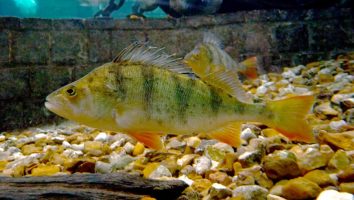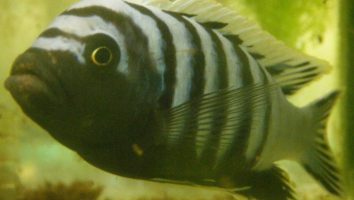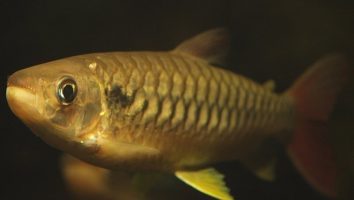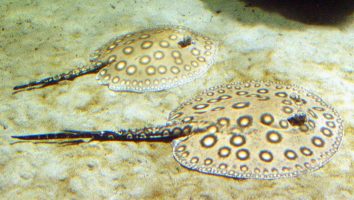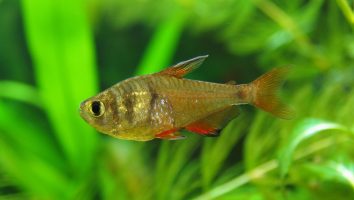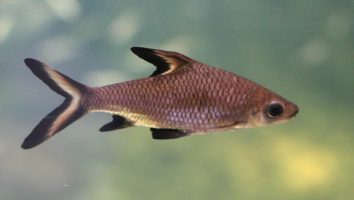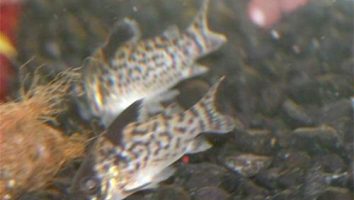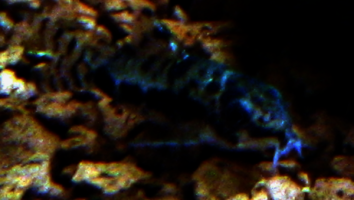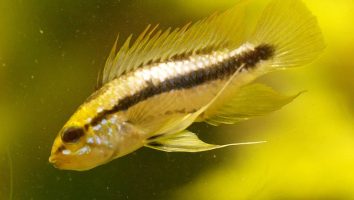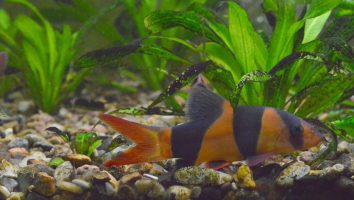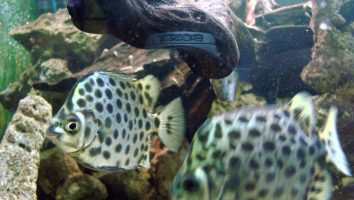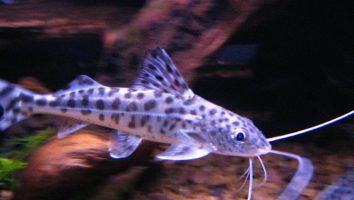The blunt-jawed elephantnose is an awesome and unique freshwater fish that is sure to turn heads.
This fish is relatively easy to care for, but there are a few things you need to know before you get one.
In this guide, we’ll teach you everything you need to know about blunt-jawed elephantnose care. You’ll learn about their diet, size, lifespan, and more!
Table of contents
Species overview
The blunt-jawed elephantnose (scientific name: Gnathonemus petersii) is a freshwater fish that is native to Africa. It is found in countries such as Angola, Benin, Cameroon, the Congo, Ivory Coast, Gabon, Ghana, Guinea, Liberia, Nigeria, Sierra Leone, and Togo.
This fish prefers slow-moving waters with a lot of vegetation. They are most commonly found in swampy areas and marshes.
The blunt-jawed elephantnose is a nocturnal fish, so it is most active at night. During the day, it will hide among the plants in the water.
This fish gets its name from its long snout, which is used to help it find food. The blunt-jawed elephantnose is a bottom-dweller and feeds on small invertebrates.
Appearance
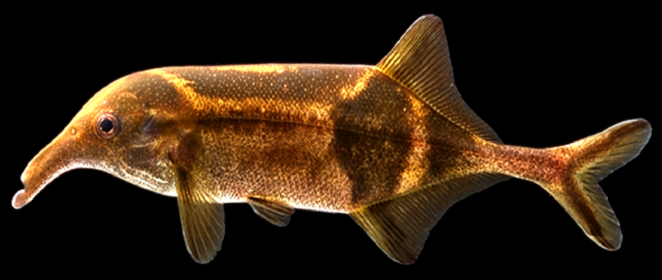
The first thing you’ll notice about this freshwater fish is the long protrusion coming out of their head. This is actually their snout, and it’s filled with sensing organs that help them find food in the dark waters they come from.
This snout is incredibly long, and it’s slightly transparent. It’s also worth noting that males tend to have longer snouts than females.
The body of the Blunt-jawed elephantnose is very long and eel-like. They have a dorsal fin that runs almost the entire length of their body, and it’s slightly transparent as well.
The anal fin is much shorter, and it’s located closer to the tail. The tail itself is very long and thin, and it tapers off to a point.
This fish is mostly a dark gray color, but they can have a brown or black hue as well. The underside is usually a bit lighter than the rest of the body.
The fins on this fish are mostly clear, but they can have a yellow or brown tint as well.
Lifespan
The average lifespan of blunt-jawed elephantnose is around 10 years. This is rather impressive and means that if you take good care of them, they’ll be around for quite a while!
Just like any fish, the lifespan of your blunt-jawed elephantnose can change significantly based on how they are treated. Things like poor water quality, stress from bad tank mates, or a suboptimal diet can drastically shorten their lifespan.
Size
The average size for a Blunt-jawed elephantnose is between 5 and 6 inches, but some have been known to grow up to 8 inches in captivity. These fish are relatively small, so they don’t need a ton of space to swim around.
Tank
Tank Size
The recommended tank size for elephantnose fish is 50 gallons. This is for a single fish but, like many freshwater fish, they do best in schools so you may want to consider a larger tank if you plan on keeping a group.
Water Parameters
The best water parameters for elephantnose fish are those that closely mimic their natural habitat. That includes a warm temperature, slightly acidic water, and plenty of oxygenation.
This is a delicate fish, so it’s important to make sure the water parameters are as close to perfect as possible. Any deviation can lead to stress and eventually health problems.
Here are a few basic parameters to help create a healthy elephantnose environment.
- Water temperature: 75 to 86 degrees Fahrenheit
- pH levels: 5.8 to 7.0
- Water hardness: 2 to 12 dGH
- Alkalinity Levels: 4-8 dKH
What To Put In Their Tank
When it comes to setting up the inside of their tank you have a few different options.
You can go with a classic gravel substrate, or something a little more unique like sand. These fish love to root around in the substrate so it’s important to choose something that won’t hurt them.
Plants are always a nice addition to any aquarium, but we recommend avoiding anything that’s too delicate. These fish love to nibble on plants, so something like hornwort or water wisteria would be a good choice.
Rocks, driftwood, and caves are all good options as well. Just make sure that everything is firmly in place. These fish are known to dig and root around, so loose objects can easily be knocked over.
One final thing to mention is that these fish are known to produce a lot of waste. As a result, we recommend using a filter with high flow rates to help keep the water clean.
Common Diseases
These fish are actually quite hardy and don’t often get sick. However, there are a few diseases that you should be aware of if you own one of these fish.
The most common disease that affects blunt-jawed elephantnoses is parasites. These can be external (like ich) or internal (like worms).
The good news is that most parasites are relatively easy to treat. You can usually get rid of them with a course of medication from your vet.
The other disease that you need to be aware of is Hole-in-the-Head disease. This is a serious condition that can be fatal if it’s not treated quickly.
Hole-in-the-Head disease is caused by poor water quality and the presence of activated carbon in the tank. The disease will present itself as one or two pits/holes in the skin of your elephantnose’s head.
If you notice this, it’s important to take immediate action. Begin treatment by fixing the water quality in your tank and removing the activated carbon. If you act quickly, there’s a good chance your fish will make a full recovery.
Behavior & Temperament
The Blunt-jawed elephantnose is a nocturnal fish, so don’t expect to see much activity during the day. When the lights are off, however, they become much more active. This is when they’ll come out to scavenge for food.
These fish are relatively peaceful and have a calm temperament. They’re not known to be aggressive, but they can be skittish around other fish. As a result, it’s best to keep them in a tank with fish that are similar in size.
The Blunt-jawed elephantnose is a unique fish because it uses electrical fields to help it find food and communicate with other elephantnose fish. When it’s looking for food, it will generate an electrical field and “taste” the water to see if there are any edible particles present.
If you’re keeping these fish in a tank, you might notice them generate an electrical field from time to time. This is perfectly normal behavior and nothing to be concerned about.
Tank Mates
Blunt-jawed elephantnose are a peaceful and easygoing species. They’re not known for being aggressive and will do well with most community fish.
The only time you might have trouble is if you add fish that are too small. These elephantnose are known to eat small fish and invertebrates.
Other than that, you have a lot of freedom when it comes to adding tank mates. These fish come from Africa, so they do best in warm water.
Some good tank mates for blunt-jawed elephantnose include:
- African Cichlids
- Synodontis Catfish
- Clown Loach
- Tetras
- Guppies
- Mollies
- Platies
Breeding
The breeding process for the blunt-jawed elephantnose is a bit more difficult and requires more attention than some other species.
The first step is to identify the males and females. The males are typically larger with longer fins. The easiest way to tell, however, is by their tusks. Males have longer and more prominent tusks.
Once you have your pair, you’ll need to set up a breeding tank. The tank should be at least 30 gallons and have plenty of hiding places. Driftwood and plants are a must.
You’ll also need to pay attention to the water conditions. The pH should be around 6.5 and the temperature should be between 77 and 86 degrees Fahrenheit.
When everything is ready, you can add the pair to the tank. The female will lay her eggs in a cave or hiding place. The male will then fertilize them.
After about a week, the eggs will hatch. The fry will be very small, so you’ll need to feed them live foods. Baby brine shrimp or microworms are a good choice.
As they grow, you can start to add other foods to their diet. They should be ready to join the adults in your main tank within a few months.
Conclusion
Overall, the Blunt-jawed elephantnose is a great fish for the beginner to experienced aquarium owner. They’re relatively easy to care for and make a great addition to any community tank.
While they may not be the most exciting fish in the world, their unique look and gentle personality make them a great choice for anyone looking for a new fish.
We hope you’ve enjoyed this guide and that it’s helped you learn a little more about the Blunt-jawed elephantnose. As always, if you have any questions or comments, feel free to reach out to us on social media or through our website. We’re always happy to help!

